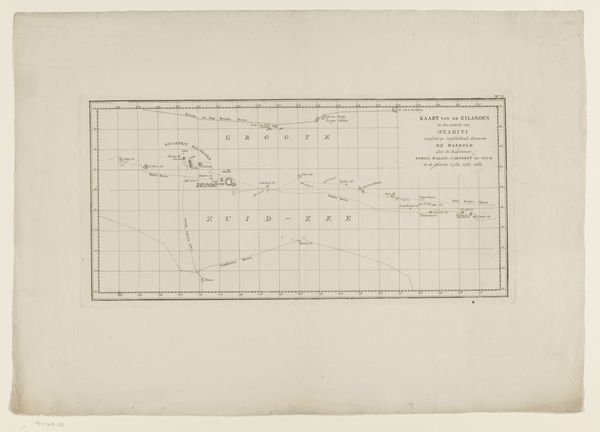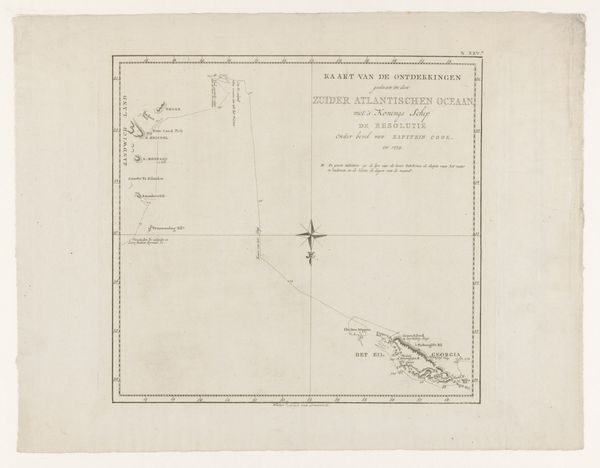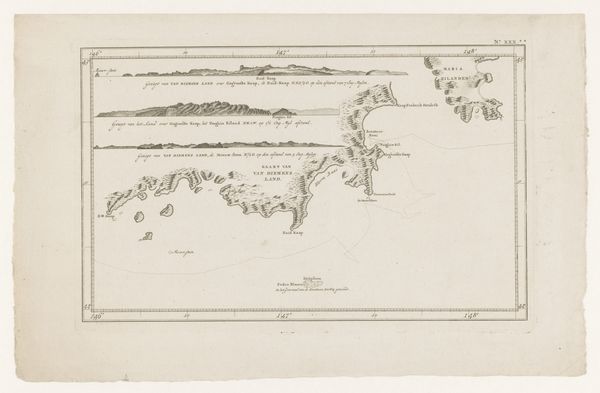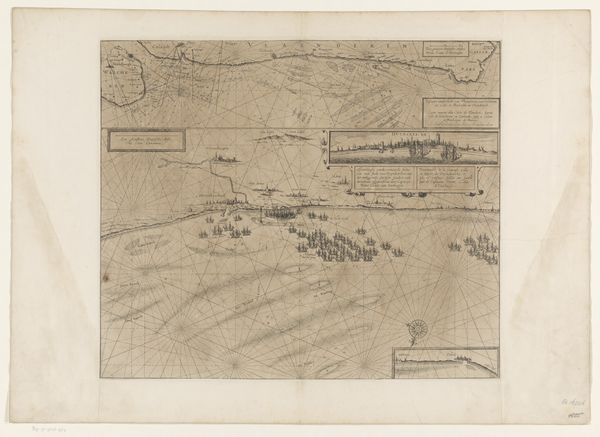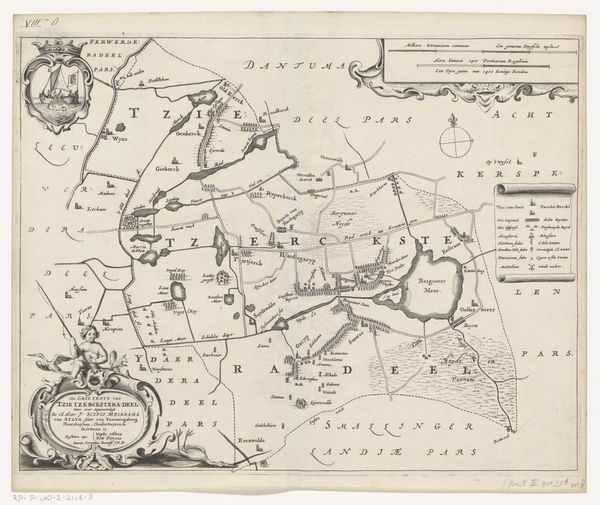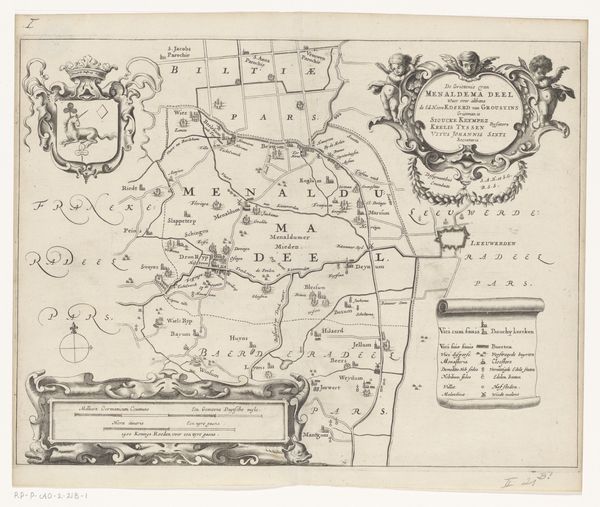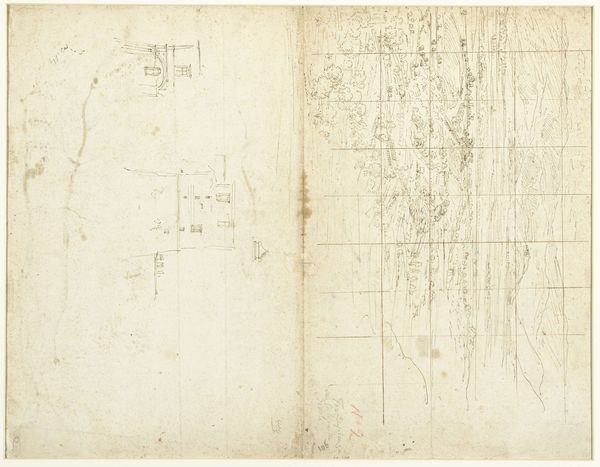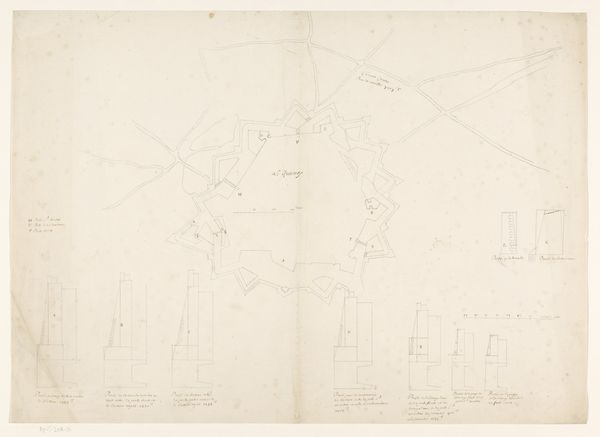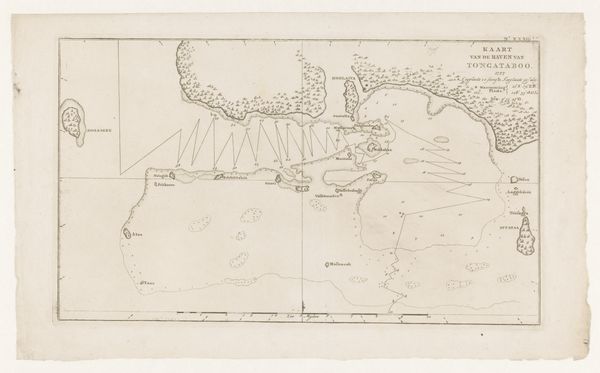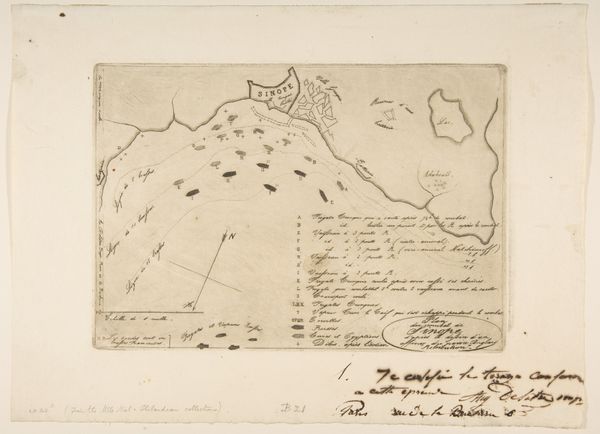
drawing, paper, ink
#
drawing
#
aged paper
#
toned paper
#
sketch book
#
etching
#
paper
#
tea stained
#
personal sketchbook
#
ink
#
sketchwork
#
geometric
#
line
#
sketchbook drawing
#
storyboard and sketchbook work
#
academic-art
#
sketchbook art
Dimensions: height 335 mm, width 405 mm
Copyright: Rijks Museum: Open Domain
Curator: Today, we are looking at "Methode van rekenen met een passer," or "Method of Calculating with a Compass," an ink and pencil drawing by Jan Brandes, dating roughly between 1770 and 1808. It is executed on paper that has aged gracefully, giving it a toned appearance. Editor: My immediate impression is that this isn't merely a mathematical diagram, but more of an attempt to grapple with the practical aspects of construction. I can see geometry brought into contact with building! Curator: That's a compelling start. Brandes was more than just an artist; he was deeply immersed in the socio-political context of his time as a clergyman, traveler, and draughtsman. Considering this intersection, it seems plausible that Brandes meant for this to inform and explore how such mathematics might democratize material access and influence production of functional elements of everyday society and their consumption, rather than high design alone. Editor: Exactly! Look at the varying line weights and the almost frantic calculations. It speaks to the act of creation itself, a vital element in its existence, particularly to its materials of aged paper and rapidly jotted ink. This work resists becoming some finished precious drawing; instead, it insists on being recorded at one moment within someone's creative labor. Curator: Precisely. Brandes likely made these sketches in his personal sketchbook to refine architectural skills, not necessarily to convey specific religious beliefs. And given the absence of clear symbolic forms, this isn’t overtly political art, either; yet as this drawing comes from a period characterized by nascent capitalist expansion within then Dutch society, these lines are quietly advocating a society being transformed by novel material calculations. Editor: Right, the means of production and its inscription here are paramount. Each angled line suggests experimentation and a testing of limits, pushing back against what can and cannot be reasonably achieved materially, which also suggests that such drawing-math ought to democratize not alienate a populous increasingly at work. Curator: I appreciate that focus on Brandes as something other than a standalone creator or tortured genius—rather one attempting an intersection of art and material agency. Thinking along these lines enriches my perception as it suggests even within such geometric constraint we find means for liberation. Editor: Indeed. For me, recognizing the drawing in terms of process underscores the artist’s role as a mediator between concept and material manifestation. It goes beyond aesthetic pleasure and gets us thinking about the hands that guide materials into reality.
Comments
No comments
Be the first to comment and join the conversation on the ultimate creative platform.
